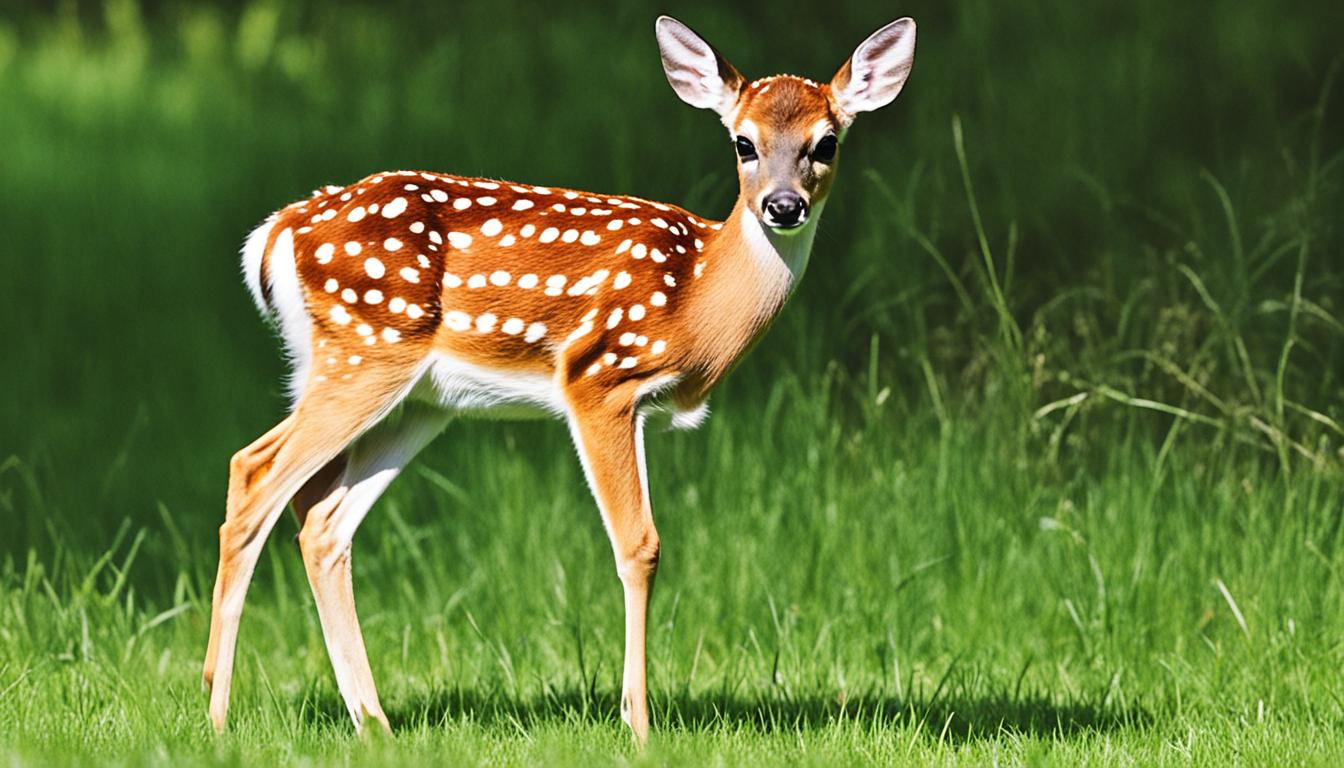Fawns of most deer species are born with spotted coats for camouflage. While the spots disappear shortly after birth in some species, there are five species that retain their spots into adulthood.
The fallow deer, specifically the European fallow deer, is one of these species. Fallow deer are medium-sized and are native to Europe but have been introduced to other continents. Their spots fade in winter.
Another species that retains spots into adulthood is the Persian fallow deer, which is larger and has less palmate antlers than the European fallow deer.
The chital or axis deer is the third species that retains spots into adulthood. Chital are found in the Indian subcontinent and have spots that don’t disappear in winter.
Content Highlights
ToggleKey Takeaways:
- Fawns of most deer species are born with spotted coats.
- The fallow deer, Persian fallow deer, and chital are species that retain spots into adulthood.
- Fallow deer are medium-sized and native to Europe.
- Persian fallow deer is larger than European fallow deer with different antlers.
- Chital is found in the Indian subcontinent and retains spots throughout the year.
The Unique Spot Patterns of Fawns
Fawns, born between late April and early June, have approximately 300 spots on their backs and flanks. The spots are arranged in two lateral lines along the spine and randomly distributed individually or in clusters on the flanks and body. The spots help camouflage the defenseless fawns in the forest floor, breaking up their outline.

The pattern of spots does not indicate the sex or age of a fawn. Each fawn has a unique spot pattern, with variations in spot count, size, and dispersion.
The number of spots a fawn has at birth remains the same as it gets older.
The Pattern of Spots
The pattern of spots on fawns is a fascinating characteristic. Despite being born with 300 spots, the arrangement and distribution of these spots can vary greatly between individuals. Some fawns may have spots that are more clustered, while others may have spots that are more evenly dispersed. Additionally, the size and coloration of the spots can differ from fawn to fawn.
While the pattern of spots on a fawn’s coat is unique to each individual, it does not provide any information about the fawn’s sex or age. Instead, it serves as an effective camouflage adaptation, helping the fawns blend into their surroundings and avoid predators.
| Spot Characteristics | Variations |
|---|---|
| Spot Count | Each fawn has approximately 300 spots at birth. |
| Spot Size | The spots on a fawn’s coat typically measure a quarter to a half inch in diameter. |
| Spot Dispersion | The spots can be randomly distributed individually or in clusters on the fawn’s body. |
These variations in spot count, size, and dispersion make each fawn’s pattern of spots unique, allowing them to blend in seamlessly with their environment and ensuring their survival in the wild.
The Role of Spots and Coat in Deer Survival
The spots on a fawn’s coat serve as a crucial form of camouflage, allowing them to blend seamlessly into the sun-dappled forest floor. Unlike humans, who rely heavily on color perception for visual identification, most mammals prioritize shape over color. Therefore, the spots on fawns’ coats play an essential role in breaking up their outline and ensuring their concealment from potential predators.
Fawn spots typically measure between a quarter and a half inch in diameter, providing an optimal size for effective camouflage. These spots are instrumental in the survival of defenseless fawns, as they allow them to remain hidden and protected during their vulnerable early stages of life. As fawns mature, they undergo their first molt, typically occurring around three to four months old, and gradually lose their spots.
Deer, including fawns, undergo seasonal coat changes that serve multiple purposes, such as thermoregulation and blending with their surroundings. In the summer, deer sport a lighter coat, which aids in reflecting heat and maintaining a cooler body temperature. This adaptation helps them navigate warmer climates more comfortably. Conversely, as winter approaches, deer develop a denser and more insulative coat, providing them with warmth and enhanced camouflage against the snowy backdrop.
The interplay between fawn camouflage, spot color and perception, seasonal coat changes, and thermoregulation showcases the remarkable adaptation strategies of deer species. Through their spots and coat transformations, deer are equipped with the tools necessary to survive and thrive in their natural environments.
- California Deer Hunting Guide: Seasons, Rules, Permits, and More - 26 June 2024
- Arkansas Deer Season 2024 [Schedules, Licenses, Bag Limits & More!] - 26 June 2024
- 2024 Arizona Deer Season New Dates & Rules! - 25 June 2024




